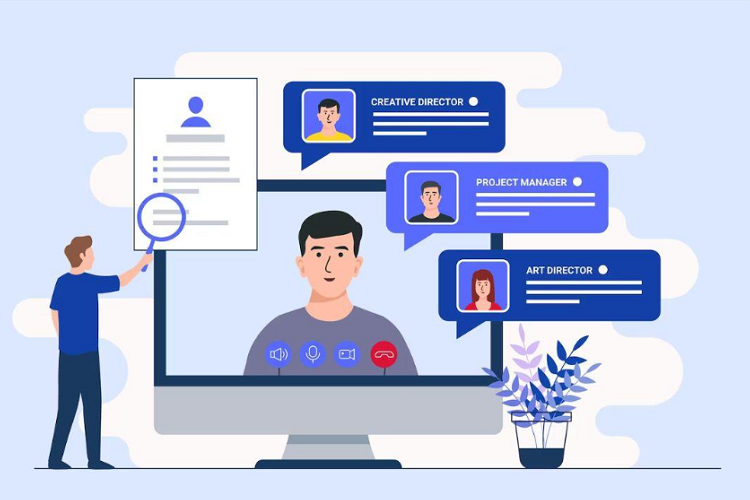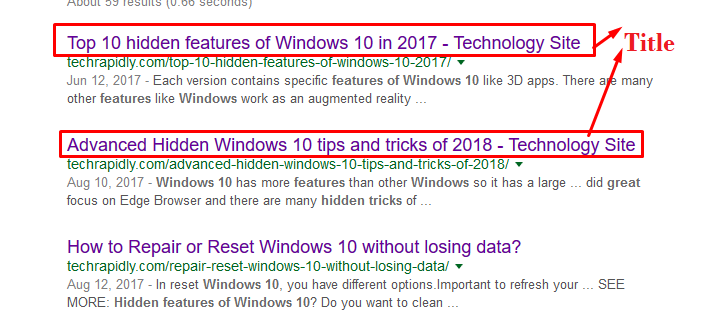In the fast-paced world of recruitment, resume screening software has become an essential tool for recruiters to efficiently manage the overwhelming influx of job applications. These software solutions help streamline the hiring process by automating the initial resume screening, saving valuable time and effort.
What is Resume Screening Software?
Resume Screening Software, also known as Applicant Tracking Systems (ATS), is a type of software designed to automate and streamline the initial screening process of resumes and job applications. It is commonly used by employers and hiring teams to manage the large volume of applications they receive for job openings.
Resume Screening Software utilizes algorithms and predefined criteria to evaluate resumes and filter out candidates who do not meet the specified requirements or qualifications. The software scans the resume for keywords, skills, qualifications, and other relevant information to identify potential matches for a particular job.
Resume Screening Software aims to streamline the hiring process, save time for recruiters, and improve the efficiency of identifying qualified candidates. However, it’s important to note that while these tools can be useful, they are not foolproof and may inadvertently exclude qualified candidates who have not optimized their resumes for compatibility. Therefore, it’s still essential for job seekers to tailor their resumes appropriately and ensure they meet the specific requirements of the job posting.
Best Resume Screening Software
As we dive into 2024, the demand for advanced resume screening software has soared, and recruiters are constantly on the lookout for innovative tools to enhance their hiring capabilities. In this blog post, we will explore the top resume screening software options for recruiters, highlighting their features, benefits, and unique offerings.
ClearCompany
ClearCompany is a talent management platform that incorporates resume screening features. It uses AI-powered algorithms to scan and analyze resumes based on specific job requirements, saving time and improving efficiency. ClearCompany also offers integrations with other HR systems and provides reporting and analytics tools.
ClearCompany offers an intuitive resume screening solution designed to streamline the hiring process. It is software that leverages machine learning algorithms to assess resumes based on keywords, experience, and qualifications. ClearCompany also provides real-time collaboration features, enabling recruiters to share feedback and evaluate candidates collectively.
SmartRecruiters
SmartRecruiters is a cloud-based ATS that includes resume screening functionality. It allows you to create customized screening questionnaires and uses AI to analyze resumes and rank candidates. SmartRecruiters also offers collaboration features, interview scheduling, and integration options with other HR tools.
SmartRecruiters is a comprehensive recruitment software that includes a resume screening component. It employs AI-driven technology to evaluate resumes, identify relevant keywords, and match candidates to job requirements. Recruiters can also leverage SmartRecruiters’ intuitive interface to compare, rank, and shortlist resumes efficiently.
Greenhouse
Greenhouse is a widely used applicant tracking system (ATS) that offers resume screening capabilities. It allows you to set specific criteria for resume filtering, such as education, experience, and skills. Greenhouse provides a user-friendly interface, collaborative features for teams, and integrates with other HR tools.
A greenhouse is a modern application tracking system with advanced resume screening functionality. Its AI-powered algorithms analyze resumes, identifying relevant keywords, skills, and experience. Recruiters can create custom scorecards to evaluate candidates consistently and collaborate effectively with team members during the screening process.
Workable
Workable is a comprehensive recruiting software that includes resume screening features. It uses artificial intelligence (AI) algorithms to automatically review resumes, analyze key qualifications, and rank candidates based on their fit for the job. Workable also offers customizable screening questions and integrates with various job boards and platforms.
JazzHR
JazzHR is an ATS that offers resume screening functionality to streamline the hiring process. It uses keyword matching and customizable screening questions to evaluate resumes and identify the most relevant candidates. JazzHR also includes features like interview scheduling, collaboration tools, and reporting capabilities.
Talentsoft
Talentsoft is an all-in-one talent management platform that includes a powerful resume screening module. Its intelligent parsing capabilities extract essential information from resumes, such as contact details, work experience, and education. Recruiters can set up automated rules to filter and rank resumes based on specific criteria, allowing them to focus on the most qualified candidates.
BambooHR
BambooHR is an all-in-one software that includes resume-screening functionality. Its AI-powered resume parser automatically captures candidate information and populates profiles, simplifying the screening process.
Bullhorn
Bullhorn is a cloud-based recruitment CRM that incorporates resume parsing and screening functionalities. Its intelligent parsing technology captures candidate data from resumes and populates fields, eliminating manual data entry. Bullhorn’s AI-powered algorithms enable recruiters to prioritize top candidates and make data-driven hiring decisions.
Jobvite
Jobvite is a comprehensive recruitment software with robust resume screening capabilities. Its SmartMatch technology analyzes resumes, comparing them against job requirements and ranking candidates based on relevance. Recruiters can easily review candidate profiles and collaborate with team members, enhancing overall hiring efficiency.
ResumeBot
ResumeBot takes advantage of artificial intelligence (AI) and natural language processing (NLP) to analyze resumes and identify the most suitable candidates. Its advanced algorithms can scan and evaluate resumes for relevant skills, experience, and qualifications. The software also provides customizable screening criteria and integrates with a popular application tracking system.
CATS
CATS (Candidate Applicant Tracking System) is a user-friendly recruitment software that includes resume screening functionality. Its powerful search and filtering capabilities help recruiters identify relevant candidates quickly. CATS also offers integrations with popular job boards and background check providers, facilitating a seamless hiring experience.
Superworks
Superworks is an end-to-end Applicant Tracking System (ATS) that incorporates intelligent resume screening functionality. It leverages AI algorithms to analyze resumes, extract relevant information, and identify the most qualified candidates.
One of the best features of Superworks especially for recruitment is Super Recruit which enables recruiters to streamline the screening process by sharing feedback, shortlisting candidates, and managing communications seamlessly. if you’re having trouble comparing candidates resumes then ATS Resume Checker Tool can help you out. Recruiters can create custom filters, search for specific keywords, and even conduct semantic searches to improve their screening process and find the perfect match.
Remember that choosing the best resume screening software for your organization requires careful evaluation of your specific needs, budget, and integration requirements. It’s a good idea to try out demos or free trials, read reviews, and consider factors like user experience, customer support, and scalability before making a decision.
How to Optimize and Make the Most Effective Use of Resume Screening Software
To optimize the use of resume screening software, you can follow these strategies:
- Optimize your Resume Format
Ensure that your resume follows a clean and well-organized format. Use standard headings and sections to make it easier for the software to parse the information.
- Use Relevant Keywords
Resume Screening Software often scans for specific keywords and phrases related to the job description. Tailor your resume by incorporating relevant keywords from the job posting, industry-specific terms, and skills sought by the employer.
- Focus on Job Titles and Experience
Highlight your job titles, previous roles, and work experience prominently in your resume. Applicant Software tends to prioritize this information when evaluating candidates.
- Include Quantifiable Achievements
Wherever possible, mention quantifiable achievements and results to demonstrate your capabilities. Numbers and metrics can catch the attention of ATS Software and make your resume stand out.
- Avoid Unnecessary Formatting
While a well-formatted resume is important, excessive formatting, such as tables, columns, or unusual fonts, may confuse the software. Stick to a simple and readable format to ensure accurate parsing.
- Proofread for Errors
Recheck your resume for spelling or math errors. These mistakes can negatively affect your chances of passing the exam.
- Use Relevant File Formats
Save your resume in a file format compatible with the software. Most systems can handle common formats like Microsoft Word (DOCX) or plain text (TXT). Avoid using unconventional file formats that might not be readable by the software.
- Avoid Using Images or Graphics
Resume screening software is typically not designed to process images or graphics. Stick to text-based resumes to ensure accurate parsing of your information.
- Test Your Resume
Before submitting your resume, test it with different resume screening software or applicant software if possible. This will help you identify potential problems and make the necessary changes.
- Customize for Each Application
Tailor your resume for each specific job application. By aligning your skills and experiences with the requirements of the job, you increase your chances of getting past the screening software.
How to Figure Out What Constitutes the Best for Your Organization
Determining what is best for your company requires careful consideration and analysis of various factors.
- Evaluate the current state of your company, including its strengths, weaknesses, opportunities, and threats. Conduct a SWOT analysis (Strengths, Weaknesses, Opportunities, Threats) to gain a comprehensive understanding of your organization’s internal and external factors.Clearly identify the objectives and long-term goals of your company. This will help guide your decision-making process and ensure alignment with your overall vision.
- Collect relevant data and information that can help you make informed decisions. This may involve market research, competitor analysis, customer feedback, financial reports, and industry trends.
- Evaluate the short- and long-term impact on your company, your stakeholders, and your business. Identify any difficulties or problems you may encounter.
- Conduct scenario planning exercises to anticipate potential outcomes based on different decision paths. This helps you prepare for various contingencies and make more informed choices.
- If needed, consult with industry experts, mentors, or consultants who can provide specialized knowledge and guidance. Their experience can offer fresh perspectives and help you make more informed decisions.
- Whenever possible, consider piloting or testing new strategies on a smaller scale before implementing them company-wide. This allows you to evaluate their effectiveness, gather feedback, and make adjustments as necessary.
Pros and Cons of Resume Screening Tools
These tools analyze and filter resumes based on specific criteria, such as keywords, qualifications, and experience. Here are some pros and cons of using Resume Screening Tools:
Pros
- Efficiency
Resume Screening Tools can handle a large volume of resumes in a short time, saving employers significant effort and time compared to manual screening. They can quickly scan and filter resumes, helping to streamline the recruitment process.
- Standardization
Applicant Software allows for consistent evaluation of resumes by applying predefined criteria and guidelines. This helps eliminate biases and ensures a fair and objective screening process.
- Keyword-based Screening
Resume screening tools can search for specific keywords and phrases relevant to the job description. This enables employers to identify candidates whose resumes match the required skills and qualifications, increasing the likelihood of finding suitable candidates efficiently.
- Organization
ATS Software provides a centralized and easily searchable database of candidate information. Employers can store and access resumes, cover letters, and other application materials in a structured manner, facilitating effective candidate management.
Cons
- Limited Context
Resume screening tools primarily rely on keyword matching and automated algorithms to assess resumes. They may not consider the overall context, such as the quality of the candidate’s work experience, soft skills, or achievements. This can lead to qualified candidates being overlooked or unqualified candidates passing through the screening process.
- Potential for Bias
Although resume screening tools aim to eliminate bias, they can inadvertently perpetuate it. Biases can occur in keyword selection, algorithm design, or the way the tool interprets information. For example, if certain keywords are biased toward a particular demographic, it may disadvantage diverse candidates.
- Missed Formatting
Resume screening tools may have difficulty parsing and interpreting certain resume formats or templates. Resumes with complex designs, graphics, or unconventional layouts may not be accurately parsed by the tool, resulting in crucial information being overlooked or misinterpreted.
- Lack of Personalization
Resume screening tools offer limited customization options, and their algorithms may not align perfectly with specific job requirements or organizational needs. This can result in potential candidates being filtered out unnecessarily or candidates who do not meet the requirements passing through.
Why Should Businesses Implement Resume Screening Software?
- Resume screening software uses artificial intelligence (AI) and natural language processing (NLP) to automate the initial screening process. It can quickly analyze and evaluate a large volume of resumes, saving significant time and effort for HR personnel.
- Human reviewers can have biases and inconsistencies when screening resumes. Resume screening software, on the other hand, follows pre-defined criteria and algorithms, ensuring a consistent and unbiased evaluation of applicants. It helps reduce the chances of overlooking qualified candidates or making decisions based on subjective factors.
- Resume screening software can match applicant qualifications with job requirements more effectively. By analyzing resumes for specific keywords, skills, experience, and qualifications, the software can identify the most relevant candidates for a given position. This leads to more accurate candidate shortlisting and better alignment between job requirements and applicant profiles.
- By automating the Resume Check Online, businesses can save costs associated with manual screening, such as HR personnel’s time and effort. Additionally, it can help reduce the chances of hiring the wrong candidate, which can lead to costly turnover and rehiring processes.
- Implementing resume screening software can help ensure compliance with equal employment opportunity (EEO) regulations and promote fairness in the hiring process. The software evaluates candidates based on objective criteria, minimizing the potential for bias and discrimination.
While Applicant Tracking Systems are essential for managing the overall hiring process, resume screening software complements them by automating and enhancing the initial resume evaluation stage. By leveraging AI and NLP technologies, businesses can significantly improve efficiency, accuracy, and fairness in candidate screening, leading to better hiring decisions.
Conclusion
In today’s competitive job market, resume screening software has become indispensable for recruiters seeking to streamline their hiring processes. The top resume screening software options outlined in this blog post offer a range of advanced features to help recruiters efficiently manage and screen resumes.
From AI-powered algorithms to intelligent parsing technology, these software solutions empower recruiters to focus on evaluating qualified candidates and making data-driven hiring decisions.
By leveraging the capabilities of these cutting-edge tools, recruiters can save time, improve efficiency, and ultimately find the best talent for their organizations. As the recruitment landscape continues to evolve, it is crucial for recruiters to stay informed about the latest resume screening software trends and adopt the solutions that best align with their specific needs and goals.
Alpesh Vaghasiya is a Director at Superworks and also a passionate writer and avid reader with a deep love for exploring various topics. Throughout his career, he has been dedicated to sharing knowledge about Recruiting Software & Applicant Tracking Systems and inspiring others through his words. He believes in the power of storytelling and its ability to connect people from different walks of life.




